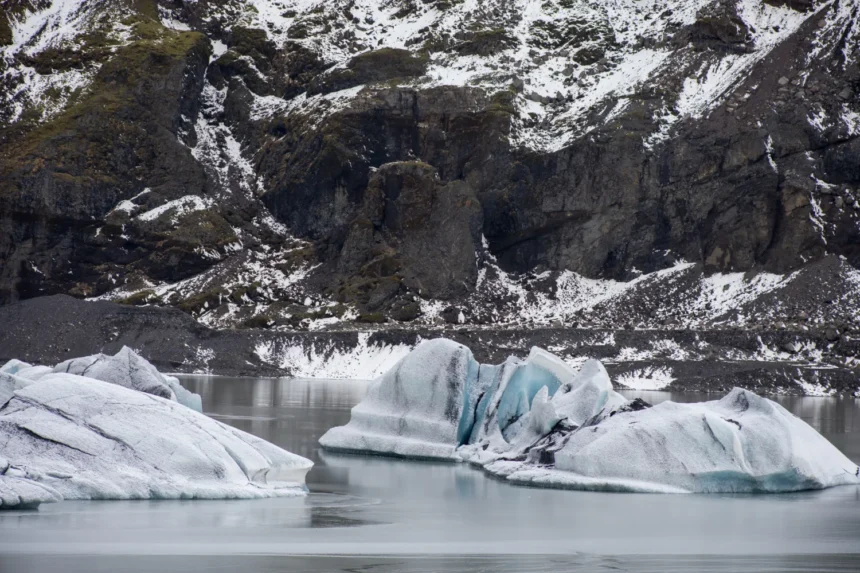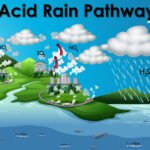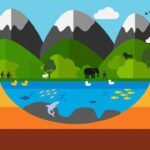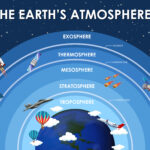Introduction
In 2014, Iceland reached a sorrowful landmark with the death of Okjökull, the country’s first glacier to succumb to climate change. This event was not only a locally shocking environmental shift; it was a global warning harbinger of the accelerating consequences of global heating. This month, NASA published striking before-and-after satellite images showing what has become of the glacier, a visual testament to an environmental tragedy.
Read also: How are Glaciers Formed? A 4-Step Ultimate Guide
Features of Okjökull Glacier
Okjökull was once a flourishing glacier in western Iceland, sitting atop the Ok volcano. It was part of the Langjökull ice cap and had special geological and climatic importance. Its defining features are as follows:
Geographical Location
- Located in Borgarfjörður, Iceland, on top of the Ok volcano.
- It was initially classified as belonging to Iceland’s smaller ice caps.
Size and Structure
- Covered around 15 square kilometers (5.8 square miles) early in the 20th century.
- By 2014, it had shriveled to below 1 square kilometer, resulting in its reclassification as a glacier.
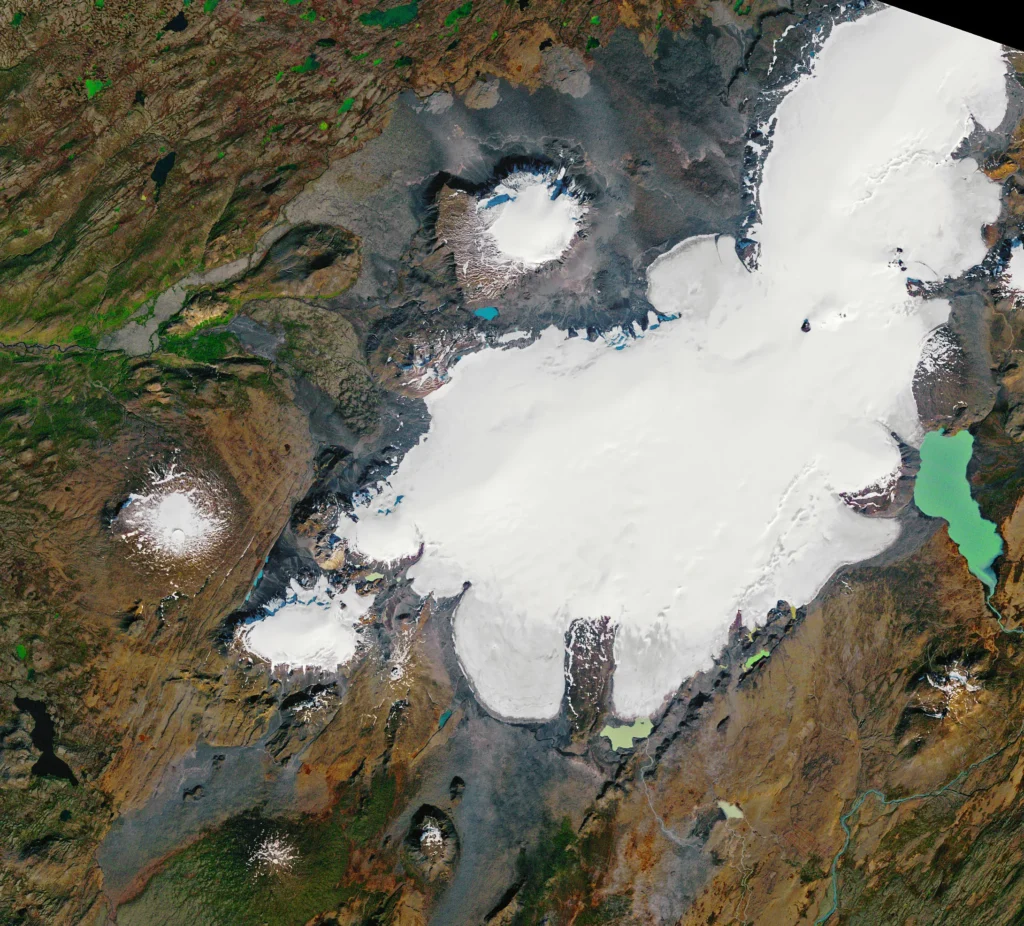
Influence of Composition and Climate
- Mostly made of compressed ice and snow that have accumulated over centuries.
- Very sensitive to changes in Iceland’s temperatures and precipitation patterns.
Read also: Climate Change and Greenland Glacial Melt – 5 Alarming Effects
Decline and Death
- Declared dead in 2014 by Oddur Sigurðsson, an Icelandic glaciologist.
- Was no longer substantial enough in mass and motion to be a glacier.
- Satellite imagery from NASA confirmed it was gone by 2019.
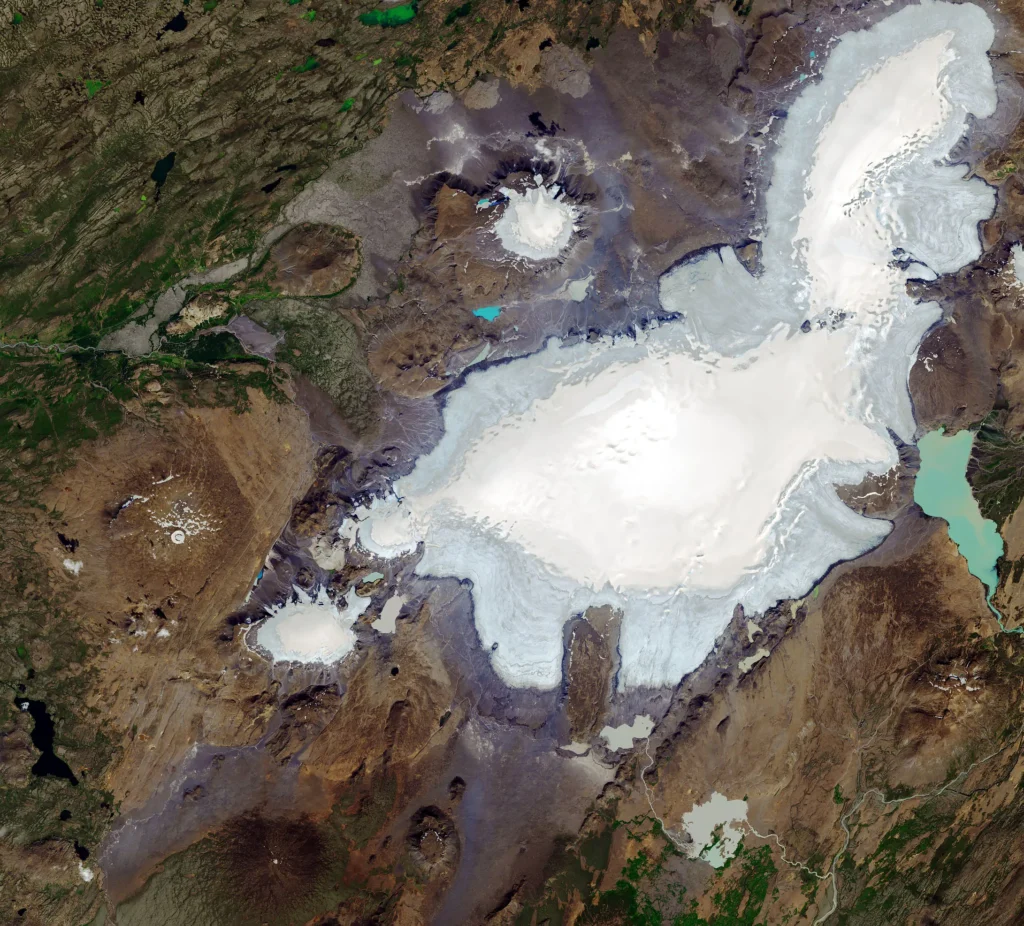
Symbolic and Scientific Importance
- Declared the first glacier killed off by climate change.
- In 2019, Iceland put a plaque, it was a warning for future generations.
The Life and Death of Okjökull
Okjökull, which was a massive glacier atop Iceland’s Ok volcano, covered about 15 square kilometers in the early 20th century. Over decades, increased temperatures and shifting climatic conditions caused it to slowly run downhill. By 2014, the glacier had thinned and receded so much that it no longer counted as a glacier, leading Icelandic glaciologist Oddur Sigurðsson to pronounce it officially dead.
Read also: You Won’t Believe What’s Happening to Lakes Around the World! The Shocking Truth Revealed!
NASA’s Visual Documentation
NASA’s Earth Observatory tracked the glacier’s retreat with satellite images. A side-by-side comparison of images taken in 1986 and 2019 that starkly demonstrate the retreat of the glacier. In the 1986 photo, Okjökull is a large expanse of ice. The ice was mostly gone by 2019, with little left but soot-covered rock.
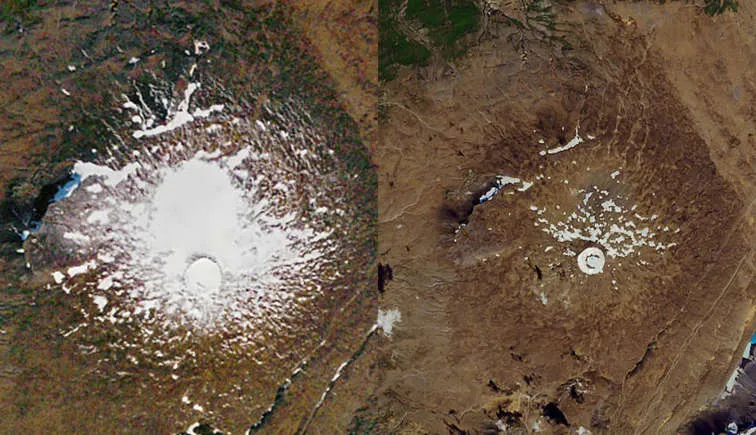
The Okjökull Loss: Global Implication
Glaciers around the world are melting and retreating at unprecedented rates, contributing to rising seas and disrupted ecosystems. Iceland, nicknamed the “Land of Fire and Ice,” has lost significant amounts of glacier cover, with the prospect that all its glaciers will disappear within 200 years with continued trends.
The death of Okjökull, the first glacier declared dead as a consequence of climate change, has global significance. It is a sign of the climate crisis unfolding faster than anyone could have imagined, with the planet’s temperatures rising and unleashing catastrophic consequences.
Read also: Discover the Magical Glacial Lagoon of Iceland: 7 Reasons You Must Visit
Indicator of Global Warming
- The loss of Okjökull speaks to the accelerated retreat of glaciers around the world, which is a direct result of rising global temperatures.
- Until then, attention is focused on climate scientists’ forecasts, which say that Iceland’s glaciers, if current warming trends continue, could be gone entirely in 200 years.
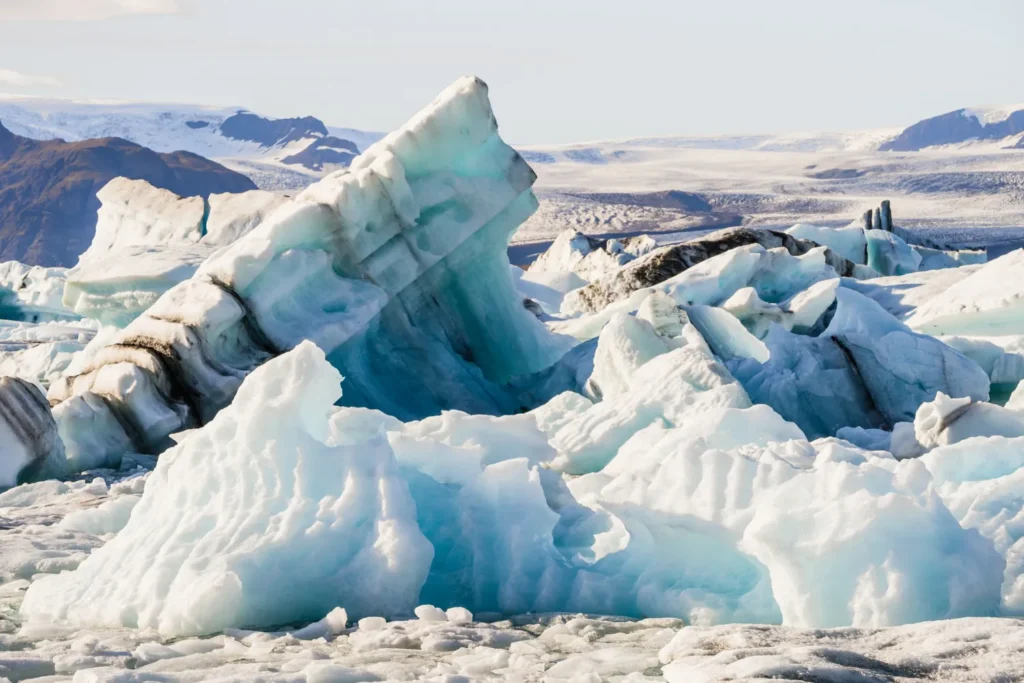
Sea Level Rise and Environmental Disruption
- The glaciers’ melting, like that of Okjökull, adds to sea level rise that threatens coastal cities and low-lying nations.
- Ice loss can disrupt ocean currents and weather patterns, amplifying storms, droughts, and extreme weather events.
Loss of Freshwater Sources
- Glaciers are natural freshwater reservoirs.
- Their disappearance threatens water supplies for millions of people and ecosystems that depend on seasonal meltwater.
A Wake-Up Call for Humanity
- The memorial plaque for Okjökull, inscribed with a “Letter to the Future,” calls for coordinated action to counter climate change.
- It represents the duty of current and future generations to fight environmental devastation.
Commemorating Okjökull
In August 2019, Icelanders held a ceremony to mark Okjökull’s passing, and they erected a plaque called “A Letter to the Future.” The inscription mourns the loss of the glacier and cautions against the fate other glaciers may face if global warming continues. This memorial is a tangible reminder of the real-world impacts of climate change.
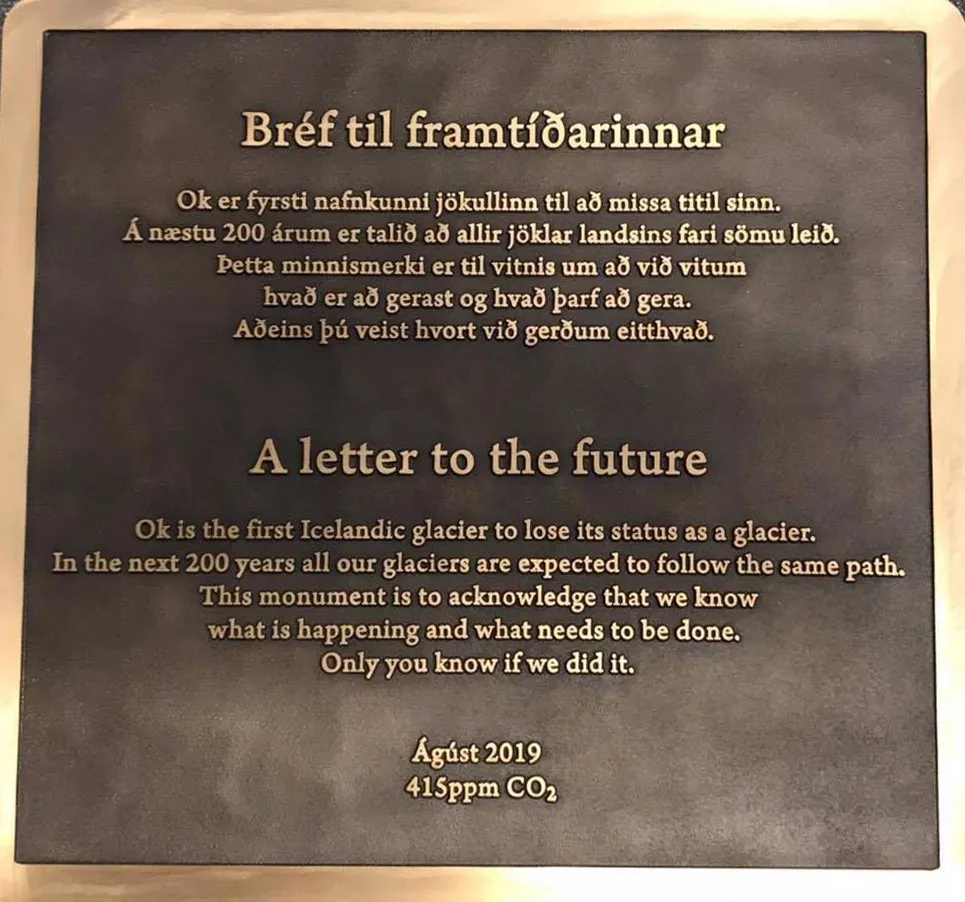
Glaciers on the Brink of Extinction
The table below shows some glaciers around the world that are on the brink of extinction due to climate change:
| Glacier Name | Location | Status and Projections |
| Triglav Glacier | Slovenia | Has been sustained only by snow-rich winters; without such conditions, it is expected to disappear. |
| Gran Norte Glacier | Mexico | Projected to lose its status as a glacier between 2026 and 2033. |
| Glaciers in the Pyrenees | France and Spain | Reduced from 100 glaciers covering 23 km² in 1850 to 17 glaciers covering 1.6 km² today; expected to disappear entirely by 2035-2040. |
| Santa Isabel Glacier | Colombia | Facing imminent disappearance, which will impact local communities relying on it for water supply. |
| Thwaites Glacier | Antarctica | Known as the “Doomsday Glacier,” it is melting rapidly and could collapse within 200 years, potentially raising global sea levels by up to 10 feet. |
| Glaciers in the Alps | Europe (various countries) | The Alps’ glaciers are at risk, having shrunk by 39% since 2000, with elevated summer temperatures accelerating their retreat. |
Read also: The Melting Crisis – The ‘Doomsday Glacier’
Conclusion
The melting of Okjökull serves as a timely reminder that we must act now to address climate change globally. NASA’s before-and-after pictures document jumps to the next stage in climate change, provoking people and countries to beat a path to stewardship of the world for its posterity.
FAQs
1. Why was Okjökull declared dead?
Okjökull lost its mass and movement, failing to qualify as a glacier due to climate change-induced melting.
2. What did NASA’s photos reveal about Okjökull?
NASA’s before-and-after images showed Okjökull’s complete disappearance, highlighting the devastating effects of global warming.
3. How does Okjökull’s loss affect the environment?
Its disappearance contributes to rising sea levels, disrupts ecosystems, and serves as a warning for future glacier loss.
4. Are other glaciers facing the same fate as Okjökull?
Yes, glaciers worldwide, including those in the Alps, Andes, and Antarctica, are rapidly melting due to climate change.
5. What can be done to prevent more glaciers from disappearing?
Reducing carbon emissions, adopting renewable energy, and implementing global climate policies can slow glacier loss and environmental damage.

